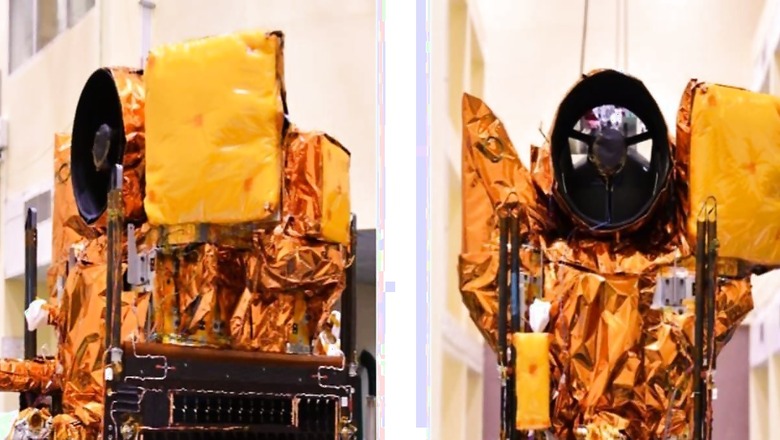
views
The Indian Space Research Organisation (ISRO) is all set to send its low-cost Small Satellite Launch Vehicle (SSLV) on its final developmental flight on the upcoming Independence Day. After its successful launch, the agency would declare the small rocket ready for future operational missions.
“The launch will take place at 9:27 am from Sriharikota on 15th August. It completes the SSLV Development Project and enables operational missions by Indian industry and NewSpace India Ltd (NSIL),” announced ISRO.
This is the third developmental flight of the SSLV — a three-stage launch vehicle developed by ISRO to cater to the fast-growing market of 500 kg satellites to low-earth orbit. With its low turnaround time and launch-on-demand capabilities, the 34-metre-tall rocket with a lift-off mass of about 120 tonnes is part of the agency’s endeavour to provide low-cost access to space. While its first mission in August 2022 was unsuccessful, it achieved its objectives during the second flight in February 2023.
CARRIES AN EARTH OBSERVATION SATELLITE — 3 PAYLOADS
The mini-rocket will fly with the agency’s latest microsatellite, EOS-08, meant for earth observation and has a mission life of one year. According to ISRO, the main objective of the mission was to design and develop a micro-satellite, create payload instruments which are compatible with the microsatellite bus, and make use of new technologies required for future operational satellites.
EOS-08 weighs around 175.5 kg and carries three payloads designed to capture images during the day and night for satellite-based surveillance, disaster/environment monitoring, environmental, fire detection, industrial, and power plant disaster monitoring. It will also provide data for ocean surface wind analysis, soil moisture assessment, cryosphere studies over the Himalayan region, and flood detection.
One of the payloads can also monitor UV irradiance at the viewport of the Crew Module in the Gaganyaan Mission and serves as a high-dose alarm sensor for gamma radiation. The satellite will be placed in a Circular Low Earth Orbit (LEO) at an altitude of 475 km and has a mission life of a year. It can generate power of around 420 W.
SSLV DEVELOPMENTAL PROJECT COMPLETE
The first SSLV mission in August 2022 ended in failure after the AzaadiSAT satellite it carried hurtled towards the earth shortly after launch. ISRO chief S Somanath had put it down to an “anomaly in placement of satellites in the destined orbit”, which was perhaps caused by the rocket’s automated response after it detected a sensor failure in the system. He said, except for this anomaly, every other element in the rocket had performed very well.
The second launch took place in February 2023 and successfully placed EOS-07, Janus-1, and AzaadiSAT-2 satellites into 450 km circular orbit in its 15-minute flight.
Catch the latest developments on Bangladesh Unrest with our live blog.




















Comments
0 comment